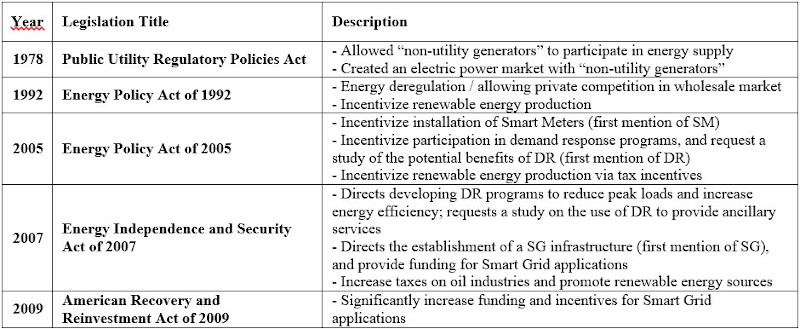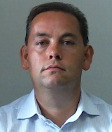The Rise of Energy Prosumers and Energy Democracy: History and Future Prospects
By Mohamed Lotfi, João P.S. Catalão, Hossam A. Gabbar
Enabling energy “prosumers” (at the same time producers and consumers) in modern power systems is a substantial paradigm shift in the way energy is generated, used, and traded as a resource. It is often perceived that energy prosumers, thanks to peer-to-peer energy trading, are a result of recent IoT tools and applications in smart grids. Nevertheless, the prosumers’ can be traced all the way back to a triad of events in the 1970’s: economically viable microgeneration, environmental concerns over emissions, and concerns about secure supply of fossil fuels. The USA, UK, and the EU were the pioneers and main drivers of this transition, and therefore the investigation focuses on their experience. This piece traces the rise of energy prosumers through the evolution of their markets and legislation, in addition to scientific research trends over the past four to five decades. Via a global perspective, one can gain a deeper understanding of how this transformation of the energy sector came to pass, leading to the recently proposed concept of "Prosumer-Centered Democratic Energy Systems". This discussion is of particular importance for engineers and policymakers, as they find themselves facing a wave of unprecedented technical breakthroughs and societal changes, to which existing structures and mechanisms must be adapted.
What is Energy Democracy?
Since the creation of the first electrical power grids, consumers were at the very end of a unidirectional system. Even after the liberalization of power markets a few decades ago, and with electricity considered a commodity with a supply-demand model, consumers still had no control or influence over any aspect of how the grid was planned, designed, or operated. Until very recently, consumers worldwide were viewed by utilities and system operators solely as end-users, without any say on any aspect of a system, which was a center-piece of their daily lives.
With this in mind, it is clear that this system was the exact opposite of a democratic one, as all of its “citizens” had no rule or influence over it, while being forced to be part of it. This was an autocratic system, with a highly centralized structure in which a minority (i.e., large utilities and grid operators) had full control over how the system was governed [1].
Recently, consumers have gained access to commercially available and affordable distributed electricity generation and storage assets, enhancing their traditional role to producers-consumers;I.e., to “prosumers”. At the same time, there has been a rise of decentralized economies allowing for peer-to-peer trading of different commodities, enabled by the Internet-of-Things (IoT). Together, these abilities provided the means necessary to empower energy prosumers, forcing a paradigm shift towards a democratic energy system. In such a system, small-scale prosumers, aggregated to large coordinated groups, have significant influence over how modern smart grid (SG) systems and electricity markets are designed and operated.
This new paradigm of prosumer-driven SGs is often referred to as the Internet-of-Energy (IoE), reflecting on the similar decentralized and largely democratic structure of the internet. The fundamental features of this paradigm can be identified as:
- Dominance of small-scale generation (primarily from renewable sources)
- Decentralized decision making procedures in operation, management, planning, and trading
- Significant levels of prosumer participation in the previous two aspects
The rapid emergence of this IoE paradigm may lead many to believe that it is a direct consequence of a series of recent and disruptive events. However, that is not the case, as this modern paradigm is the result of a long and complex series of events which have taken place over five decades. In fact, the origins of this transition can be traced to the first motions to implementing demand-side management (DSM) and demand response (DR) strategies, which themselves can be traced as far back as five decades.
The Rise of the Demand Side: A Historical Analysis
The 1970’s witnessed a triad of events which can be identified as the origin of the transition to modern SGs:
- Technological advances causing generation economies of scale at the unit level to be exhausted at the level of 500 MW, severely affecting the monopoly of electricity generation
- The beginning of global environmental awareness which resulted in the first enactment of government-led environmental policies, as the US Clean Air Act of 1970 and the first European Action Program in 1973
- The 1973 oil crisis raised concerns on security of electricity supply and the need to diversify the power generation mix, which was largely dependent on fossil fuels. The need to incorporate renewable and clean energy sources was imminent
These events sparked a series of legislations leading to a reform of the electricity sector, characterized by smaller competing electric utilities and proliferation of small renewable generation. The pioneers of this transition have been as the USA, UK, and the EU, by implementing first legislation to accelerate this reform. It was during this transition that the development and enactment of DSM and DR appeared as a natural consequence. Tables I-III list in detail the series of relevant legislature by the USA, UK, and EU, respectively.
Over time, the demand side started to be perceived as a collection of active participants in the system, rather than passive users. With easy access to microgeneration resources, the prosumers of electricity changed the entire operational paradigm of the power grids to a bidirectional power flow model. Moreover, since dynamic pricing is a fundamental pillar of DR strategies, prosumers now had the power to influence electricity prices, making the bi-directional interaction not only a matter of technical interest, but also of market and economics nature.
Table I. List of USA Legislations:
Table II. List of UK Legislations:
Table III. List of EU Legislations:
Status-Quo and Future Prospects
Nowadays, prosumers have become an integral component of modern electric power systems worldwide. It is almost impossible to discuss about energy systems without mentioning prosumers and peer-to-peer trading (e.g. using Blockchain) in an IoE context. Various scientific and assessment studies (such as [3]) have investigated this in detail, showing that all fields of power systems research are involved in this shift.
There is no doubt that this prosumer-driven evolution of SGs results in increased decentralization of energy systems at three clearly separate layers: power generation, information exchange, and energy markets. However, with disruption through technological breakthroughs and global socio-economic events, it is difficult to foresee how decentralization will evolve from this point.
On one hand, advocates of “energy democratization” believe in a structure similar to the internet, i.e. a fully decentralized one. The argument is that decentralized systems make better use of the local resources, reducing costs and losses from transporting these resources, leading, thus, to added environmental sustainability and fair use of them. In an increasingly digital and connected world, this argument is very realistic. On the other hand, there is also a lot of skepticism, as many believe that fully decentralized systems are only made possible by information technologies susceptible to data security and privacy threats and risks. Moreover, electricity as mentioned earlier is a lifeline, and due to its strategic importance, some feel that a central entity must guarantee its secure and uninterruptible operation. A “middle ground” perspective popular in scientific literature are hierarchical infrastructures. In such infrastructures, energy communities are operated in a decentralized manner, e.g. microgrids, and are overseen or regulated by an external entity. This may offer a compromise between the two extreme cases.
Whatever the case may be, it seems certain that increased digitalization, prosumer-centered energy systems, and democratization of the energy sector will be the global trend in the near future.
References and Further Reading
- J. Green and P. Newman, “Citizen utilities: The emerging power paradigm,” Energy Policy, vol. 105, pp. 283–293, Jun. 2017.
- M. Lotfi, C. Monteiro, M. Shafie-khah, and J. P. S. Catalao, “Transition toward blockchain-based electricity trading markets,” in Blockchain-based Smart Grids, M. Shafie-Khah, Ed. Academic Press, 2020, pp. 43–59.
- M. Gough, S. F. Santos, M. Javadi, R. Castro, and J. P. S. Catalão, “Prosumer Flexibility: A Comprehensive State-of-the-Art Review and Scientometric Analysis,” Energies, vol. 13, no. 11, p. 2710, May 2020.
- M. Lotfi, C. Monteiro, M. Shafie-Khah, and J. P. S. Catalao, “Evolution of Demand Response: A Historical Analysis of Legislation and Research Trends,” in 2018 20th International Middle East Power Systems Conference, MEPCON 2018 - Proceedings, 2018, pp. 968–973.
This article edited by Panos Moutis
For a downloadable copy of July 2020 eNewsletter which includes this article, please visit the IEEE Smart Grid Resource Center.



To have the Bulletin delivered monthly to your inbox, join the IEEE Smart Grid Community.
Past Issues
To view archived articles, and issues, which deliver rich insight into the forces shaping the future of the smart grid. Older Bulletins (formerly eNewsletter) can be found here. To download full issues, visit the publications section of the IEEE Smart Grid Resource Center.




